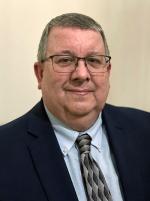Texcare Asia 2007—the largest industry show in the Far East—welcomed thousands of visitors during its recent three-day run, but it was the visitor that never arrived that got
most people talking.
The International Trade Fair for Modern Textile Care opened on schedule in Shanghai Sept. 19, even as China’s financial center braced for what was forecast to be the worst typhoon to strike the country in a decade.
Home to 20 million people, Shanghai closed schools and cancelled ferries after predictions of torrential rains and strong winds. But Typhoon Wipha had little impact on Shanghai; it made landfall well to the south and soon weakened to a tropical storm.
Some 2.67 million people in the Zhejiang, Fujian, Shanghai and Jiangsu provinces were relocated before Wipha arrived. The typhoon destroyed more than 9,600 homes and damaged 42,000 others in the region, killing five people.
Heavy rains pelted the Shanghai New International Expo Centre’s fabric roof during Texcare Asia’s opening ceremony, but the weather cleared by the next morning. What impact the storm may have had on attendance is anyone’s guess. Several U.S. exhibitors said they knew of individuals who planned to attend, but changed their plans or couldn’t travel to Shanghai because of the weather.
Messe Frankfurt, the German show-management firm behind Texcare International and Texcare Asia, reports that 5,785 visitors from 55 countries and regions came to the show. In comparison, Texcare Asia 2005 in Beijing drew 5,259 visitors from 52 countries and regions. About 22% of visitors (1,270) to the Shanghai show arrived from overseas, and the 135 exhibitors represented 17 countries and regions.
The International Committee of Textile Care (CINET) offered the Professional Textile Care Academy (PTCA) in cooperation with the China National Light Industrial Machinery Corp. and Messe Frankfurt. The two-day conference program was designed to bring European drycleaning and laundry expertise to a China hungry for knowledge. Scheduled largely during show hours, the PTCA drew limited interest.Waving Their Flags. Shanghai-based SailStar invited VIPs to tour its production facilities, with Tony Franklin, president of SailStar USA, announcing that the company would bring more new equipment to the U.S. market during the first quarter of 2008.
“We have, this year, a new range of hydrocarbon drycleaning machines,” he says. “With the introduction of those [at the Clean Show], we’ve been very busy. We have a number of new laundry machines, rigid-mount machines, that we’re going to be introducing over the next six months.”
The additions will allow SailStar to offer dealers a full range of equipment rather than fill the gaps in other brands’ lines, Franklin says. When complete, the SailStar line will offer rigid-mount washers from 20 to 125 lbs., and soft-mount machines from 50 to 200 lbs. SailStar’s drycleaning equipment will include perc machines from 30 to 80 lbs. and “multisolvent” models from 45 to 80 lbs. SailStar also markets a 60-lb. CO2 unit.
Many U.S.-based exhibitors focused their efforts on promoting their brands rather than selling equipment directly. Charles Giancola, president of D.J. Giancola Exports, Syracuse, N.Y., met with potential distributors for brands his company exports, including Forenta, Pony, Donini, Colmac, White Conveyors and others.
Since Alliance Laundry Systems acquired the Cissell and IPSO brands last year, Texcare Asia offered the company a venue to meet the region’s distributors and bring them up to speed on this and other changes, says Jeff Brothers, senior vice president of sales and marketing. “A lot of the newer IPSO and Cissell customers that have been selling the products for years didn’t know us or what our plans were,” he says. “Certainly, the Asian markets are important to us for long-term growth.”
Hoffman/New Yorker president Richard Greco believes that the crowd was bigger in Beijing two years ago, but says the Shanghai show presented business opportunities nonetheless. “We have had some quality people come in and been able to create some orders,” he says. “We’ve had a lot of activity on our automatic shirt units, because of the advanced technology and the fact they’re looking to get higher productivity.”
“We’re starting to see more private drycleaners interested in finishing equipment; you didn’t see that two years ago,” adds Tom Bolan, Hoffman sales manager. “That was a pleasant development.”
Setting aside an order he was preparing, Mauricio Lima, director of international sales for American Dryer Corp. (ADC), says he relies heavily on the local dealers he meets to present his company’s products to the growing Chinese market.
Craig Forsey, director of international sales for Forenta, attended the show in support of his Asian distributors. Much of Forenta’s international business is in “project” work, he says—particularly the construction of new five-star hotels.
“They generally, by case and brand, specify American or European laundry and/or drycleaning valet-type equipment,” Forsey says. “We’ve been doing that for a lot of years, and our business is very good.”
John Riddle, president of Riddle & Associates, the Clean Show’s management firm, and David Cotter, CEO of the Textile Care Allied Trades Association (TCATA) and a member of Clean’s Executive Committee, exhibited to spark interest in Clean ’09 in New Orleans. They sought attendees as well as exhibitors that could offer unique products for use in the U.S. textile-care market.
“I think there’s a huge amount of value for our show—for our U.S. industry—to be here, to network and meet people, and expose what we’re doing in the United States to the rest of the world,” Riddle says.
Texcare Asia will return in 2009, organizers say, but the site has yet to be determined. Messe Frankfurt polled attendees during the trade fair about their preferences for the month and location of the next show, and will announce its decision soon.
Have a question or comment? E-mail our editor Dave Davis at [email protected].
